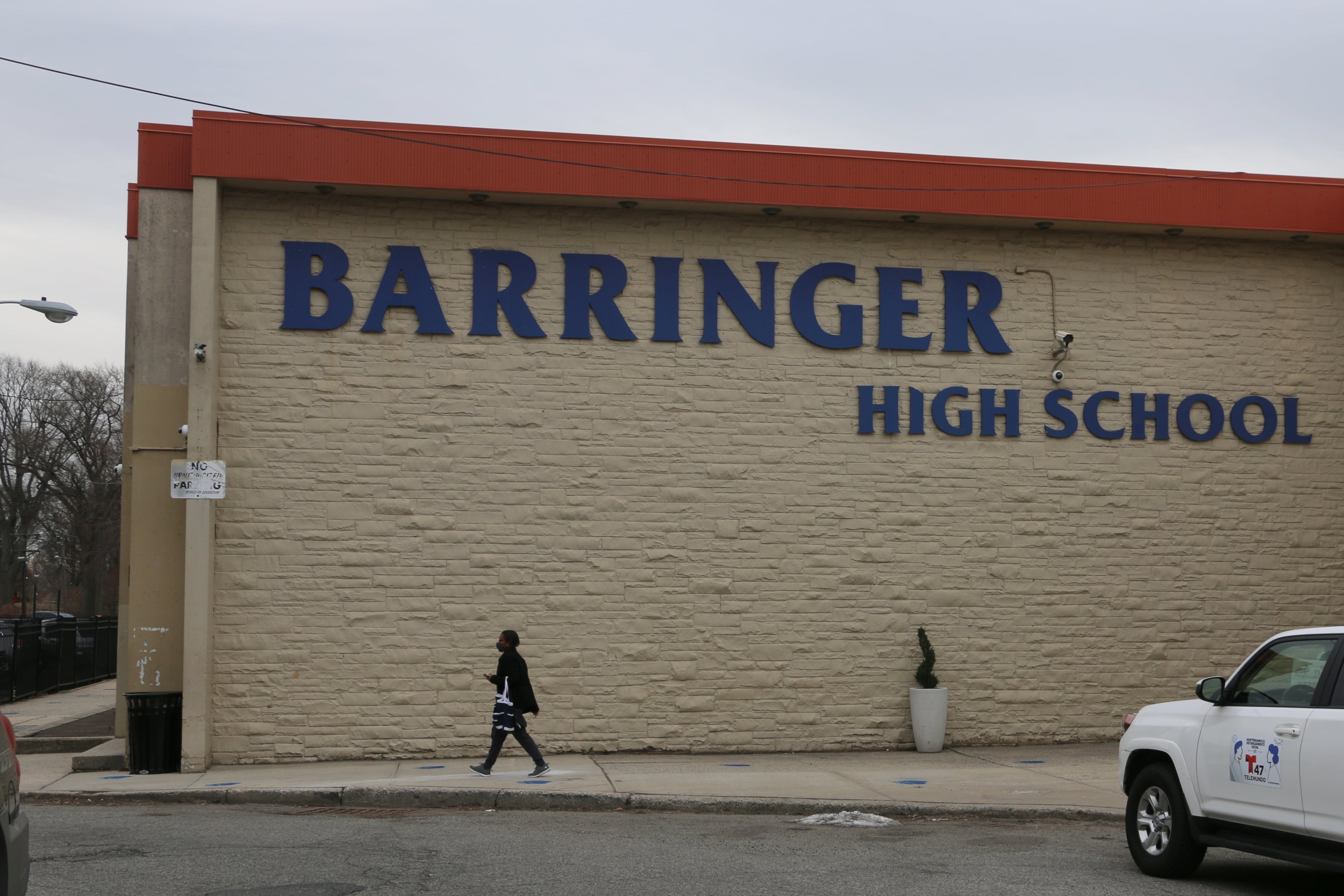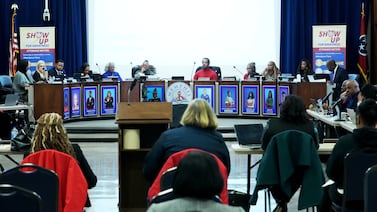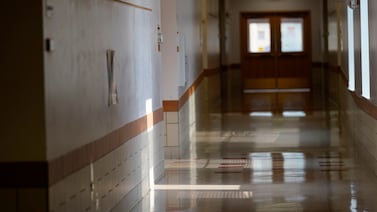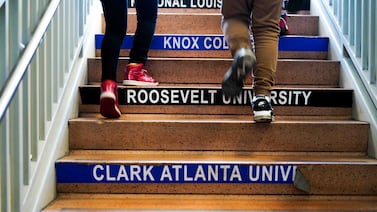When Madison Upshaw showed up to her forensic science class at Newark’s Barringer High School on the first day of school, she found an athletic coach at the front of the room.
“He was like, ‘Yeah, I’m gonna be your sub for the whole year,’” the 12th-grader said. “I guess they can’t find anybody.”
Upshaw was one of many Newark students who returned last week to a school without enough teachers.
Across the district, 120 instructional positions were still unfilled when classes started Sept. 7 — a larger number of open jobs than around this time in the previous two school years, according to data obtained by Chalkbeat through a public records request. Barringer alone is short 15 teachers, including five for bilingual classes, three for special education, and others for math, science, social studies, and more.
The problem is widespread: About 60% of the district’s 65 schools were short at least one teacher or other instructional staffer, such as a counselor or social worker, the data show. The staffing crunch meant some students found substitute teachers or crowded classrooms on their first day back.
Schools nationwide are struggling to hire enough teachers. The shortage predated the pandemic, but COVID compounded the problem by convincing some teachers to retire early or change professions. The staffing shortfall could have dire consequences this school year because many students faced academic and mental health challenges during their 18 months out of classrooms and now need extra support.
New Jersey reported teacher shortages this school year in math, science, world languages, special education, vocational training, and English as a second language. In Newark, the most acute shortages are for elementary school, bilingual, and special education teachers.
“The more specialized the field, the fewer candidates there have always been,” said Karen Bingert, executive director of the New Jersey Principals and Supervisors Association. “And now it’s exponentially tighter.”
The shortage could spell bad news for students. Schools often fill vacancies with substitute teachers, who might have less experience or expertise in a given subject than a full-time teacher would. Other times, schools make up for the staffing shortfall by combining classes or assigning teachers extra periods.
Even if schools eventually fill the open positions, student learning suffers when teachers are hired midyear, researchers have found. The instability makes it hard for students to build trust and rapport with their teachers, Bingert said.
“That has academic and developmental repercussions” for students, she added. “It can be pretty heartbreaking.”
Newark schools were short a dozen bilingual teachers, the Sept. 7 data show. A chronic shortage of bilingual teachers was one of the problems uncovered during a yearslong investigation by the U.S. Department of Justice into the district’s program for students still learning English.
As part of a settlement with the Justice Department, the district must create a plan to recruit and retain more educators who are qualified to teach bilingual or English as a second language classes. The district also is offering $4,000 bonuses to teachers who get certified in one of those areas.
The district, which educates roughly 37,000 students and employed nearly 3,900 instructional staffers last school year, has taken a number of other steps to fill its vacancies.
The district hosted virtual job fairs this summer, including one targeting bilingual teachers that resulted in seven hires, according to school board documents. The district also offered bonuses to employees who helped recruit bilingual teachers, though only 12% of referrals were hired.
In addition, the district hired more than 30 former student teachers as full-time educators; brought on some members of Teach For America, a program that offers abbreviated teacher training; and partnered with Montclair State University to funnel recent graduates into open classroom positions. In total, the district welcomed some 350 new teachers this school year, officials said.
“The district is working tirelessly, aggressively, and strategically in recruiting and hiring the best qualified teaching staff,” said district spokesperson Nancy Deering. She added that hard-to-fill positions, including special education, are a top priority.
State lawmakers have also sought to ease the teacher shortage. Earlier this year, Gov. Phil Murphy signed into law a bill that cut in half the number of credits a college student needs to become a substitute teacher, and extended the length of time that substitutes can fill in for full-time teachers.
While such stopgap measures might be helpful, schools also need long-term solutions to their staffing problems, said Steven LoCascio, head of educational leadership at Kean University’s College of Education. One crucial strategy is to improve teacher retention through better pay and more training and support for novice teachers.
“It’s hard enough to get new teachers,” LoCascio said. “But then when we get them, we’re not always able to keep them.”
Teacher turnover has long been a challenge for Newark. About 15% of teachers left the district between the 2018-19 and 2019-20 school years, compared with 9% of teachers who left their districts statewide, according to the most recent data.
From January to August of this year, 176 teachers resigned or retired from the district and 77 were fired or let go, according to district data. The numbers were similar in 2019, suggesting that the pandemic is not the main cause of the churn.
Iris Ventura, a senior at Barringer High School, said several teachers she’d grown close with didn’t return this year.
“When you make a bond with them” and they leave, she said, “it’s like, ‘No!’”
Barringer has another big challenge: Its rising population of English learners, who accounted for 40% of students in 2020, creates an acute need for bilingual teachers — a group in high demand statewide. An administrator at Barringer said hiring bilingual teachers is like “finding unicorns.”
Substitute teachers are also in short supply. As a result, administrators have been asking teachers to fill in on days when particular classes are without a full-time or substitute teacher, said one Barringer educator.
The teacher, who asked to remain anonymous to avoid retaliation, also said extra students were added to her roster because her department is short two teachers. All the scrambling to compensate for missing teachers sends a bad message to students, she added.
“It makes them feel like they don’t matter,” she said, when in fact, “these kids really deserve the best teachers.”






